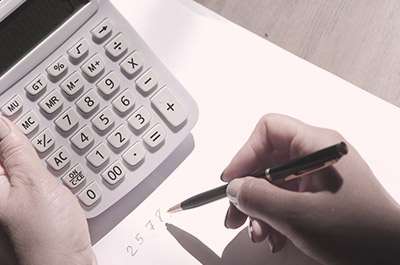Hey there, friends! We’re about to go on a cool adventure where we’ll learn 10 awesome ways to spend our money wisely. Come join me on this journey
Replace all of your light bulbs with LEDs and unplug appliances that you aren’t using.
This might be one of the easiest things you can do to save money. LED lights use much less energy than traditional light bulbs, they often last longer too, and they’re more affordable for you in the long term.

Another way to cut down on your electricity is by using compact fluorescent light (CFL) bulbs in any lamps o or fixtures you’re using. These will save you even more money, and they last longer than standard light bulbs too, so there’s no sacrifice in terms of quality.
Unplugging, or at least powering down, all of your appliances when they aren’t in use is another way to save money. You’ll be surprised by how much energy you’re wasting by leaving certain things plugged in. Try unplugging all of your devices and office equipment when not in use.
Unplug any appliances, such as your TV or video game console, to avoid phantom power drains when not in use. You can also connect these devices to a smart power strip that will automatically shut off the power supply to the devices when they’re not in use.
Change your traditional shower head for a water-saving showerhead. You’ll see an immediate impact on your water bill (and your skin will thank you).
Plan your meals ahead of time and cook at home as often as possible.
If you’re looking for a way to save money on groceries, consider meal planning. It’s a great way to get organized and make sure you know what ingredients you have on hand. Plus, it makes your grocery shopping more efficient!
By planning ahead of time, you’ll avoid last-minute trips to the grocery store when you’re hungry or tempted by impulse purchases. You can also save money if you cook at home instead of eating out.
Grocery shopping is one area where it’s easy to fall into a habit of buying more than what’s needed. For example, buying more fresh produce than you can use or more snacks than your kids will eat. If you buy only what’s needed, you’ll save money and reduce the risk of wasting food.
Ride your bike or walk instead of taking cars or public transportation.
If you can walk or ride your bike to work, school, the store, and other places consider doing it regularly. You’ll save money by not using your car as often and staying healthy at the same time!
Walking and biking are great ways to get active most days of the week. And if you live near where you need to go, these are ideal forms of transportation.
Also, when possible, try to combine errands so you’re making fewer trips around town. This is a great way to save time and money!
Track your spending.
You might be surprised how much you spend when you keep track of what’s coming in and going out of your wallet. For example, tracking your income and expenses can help uncover ways to save money on groceries. You might be spending way too much each month on eating out or impulse purchases.

By keeping track of your spending, you’ll also have a clear picture of your budget, so you know how much to spend on rent, food, entertainment, and so on. This is an important step in determining where you can cut back or maybe even where you can save.
For example, you might find that you spend too much on your morning latte, and by cutting back each day, you can save $5-10 dollars a week. That’s $20-40 dollars a month, which you can use to save up for a big vacation!
Buy second-hand clothing and furniture.
If you’re looking to save money on clothes, consider buying second-hand. It’s a great way to get designer clothes for a fraction of the cost. This can be especially helpful in getting clothing and shoes for growing kids.
For example, you could find a boutique children’s store and buy used clothing and shoes at a fraction of the cost.
It’s also a great way to save money on furniture. Check out yard sales and second-hand stores to find great deals on essential furniture items, such as dressers, couches, tables, and more.
Get a reusable water bottle.
Buying bottled water can be expensive. Instead, look for a reusable water bottle you can take with you wherever you go. It’ll help cut back on the number of plastic water bottles you use, which is great for the environment.
It can also encourage you to drink more water each day, which is great for your health.
It’s a great way to drink more water each day and save money in the long run. Plus, you’ll save the planet and help reduce global warming.
Avoid impulse buys.
Impulse buying happens when you buy things on a whim. It’s great to be spontaneous and have fun spending money, but keep in mind that impulse buys are more expensive than planned buys.

If you have a set amount to spend, try sticking to it so you don’t overspend; impulse buying goes hand-in-hand with not tracking your expenses. If you make many impulse purchases, you might find yourself struggling to make ends meet each month.
You could be wasting your money on things you don’t really need. To avoid this, wait at least a week before buying something you impulsively want. It might change your mind and save you some money!
If you still really want or need something, consider buying it second-hand or using coupons to save on the full price.
Many grocery stores offer coupons online, through their app, or in the newspaper. And many stores double coupons, which can save you a great deal on your groceries each month.
You’ll also save money by shopping the sales at your favorite stores. Most big-name retailers have a sale each week, which can mean deep discounts on what you need. If you see a sale, mark your calendar and be ready to buy when the time comes!
Cancel unused subscriptions and memberships.
Do you really need cable TV? How about your expensive gym membership, which rarely gets used?
If you can save money on certain expenses, such as cable or gym membership, it can help ease the financial burden and improve your bottom line.
It might be a little tough to cancel a subscription or a membership, but doing so can cut back on the amount of money you spend each month.
There are plenty of alternatives to expensive subscriptions, so keep that in mind when you’re considering your options. For example, if you have Netflix for watching movies and TV shows, why do you need cable?
Do what works for your budget and your lifestyle. You might be surprised by how much money you can save by cutting back on certain expenses.
Compare prices online before buying anything.
Before making a major purchase, such as for an appliance or furniture, take some time to research and find the best price.
You could start by searching on Google Shopping and then visiting websites like Amazon.com and Overstock.com. It might also be worthwhile to check your local stores and see if they’re having a sale.
If you can find a lower price online or at other stores, you could save a good amount of money on your purchase.
You don’t need to spend a lot of time researching if it’s not something you enjoy. But taking the proper steps before buying anything can help make sure you’re getting the best possible price. For example, you don’t want to find a TV on sale only to realize the warranties are terrible.
Buy quality products that last longer, and take care of them!
Some things end up lasting for years, like appliances and furniture. Other things, like clothing or certain items for your home, might not last more than a few months or one year.

To save money, it’s best to think about what will last you a long time versus what won’t.
It might be a great idea to invest in higher-quality items when possible. Not only are quality products typically more durable, but they might even last longer than cheaper brands or styles.
Cheap products cost you more in the long run, essentially wasting your money. That’s why it’s best to buy quality when you can afford it.
It is essential to take care of what you have so it lasts longer. You might not think about taking care of your things, but they’ll last for a shorter period if you don’t look after them.
For example, take good care of your clothes and other accessories by washing them only when necessary and always hang drying them. You’ll help extend the life of your clothes, which saves you more money in the long term.
Conclusion
So there you have it – 10 tried and true ways to save money. If you’re looking for more ideas, be sure to check out our blog for tons of helpful tips. And don’t forget, if you need help implementing any of these strategies or want advice on where to start, I’m here to help!

Meet Anna West! A connoisseur of all things stylish, Anna has an innate ability to weave the latest in fashion trends seamlessly into her writings. But her expertise doesn’t stop at fashion for modern women. Within the folds of her articles, you’ll also find a sprinkle of home decoration wisdom, a dash of pet care advice, and thoughtful insights on relationships. While fashion remains her forte, Anna’s multifaceted perspective ensures that her readers get a well-rounded dose of inspiration for various facets of life. Dive into Anna’s world, and discover a blend of style, elegance, and practical wisdom. Stay informed, inspired, and always in vogue with Anna West.
Reviewed By: Joanna Perez and Marcella Raskin
Edited By: Lenny Terra
Fact Checked By: Brenda Tillman
Photos Taken or Curated By: Matthew Mansour